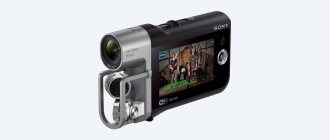Stargazing is of interest not only to professionals, but also to amateurs who cannot imagine life without the starry sky. But even for experienced astronomers, choosing the best telescope for your home is not easy.
People's choice:
| Model | Price |
| 1. Sturman HQ2 60090 AZ | from 20,000 rub. |
| 2. Levenhuk Skyline BASE 70T | from 15,000 rub. |
| 3. iOptron SmartStar-A-R80 Pulsar Purple | from 27,000 rub. |
| 4. Celestron Travel Scope 80 | from 16,000 rub. |
| 5. Veber PolarStar 900/90 AZ | from 24,000 rub. |
mini telescope rating
Types of telescopes
Different telescopes
There is a long list of devices for observing stars on sale:
- refractory ones - they are often called lens ones - are simple, reliable and have a minimum of manual settings;
- reflex or mirror; their main element is a mirror, due to which the image never loses clarity;
- catadioptric or hybrid - absorbed all the best from previous models and are based on two schemes;
- chromospheric – designed for images of the solar chromosphere.
You will have to choose between visual observation and visualization
The telescope you need to observe the planets of the solar system and the telescope you need to photograph deep space objects such as galaxies or nebulae are very different. Some telescopes are designed for visual observation only, while others are designed only for deep space imaging. They differ greatly not only in optical system, but also in price. Astrophotography is much more expensive and difficult to master. It is probably not suitable for beginners.
Typically, an amateur astronomer begins by visually observing easy targets such as Jupiter or Saturn and learning to use his telescope. As he or she becomes more experienced, he or she may become interested in photographing deep sky objects and thus obtain a telescope more suitable for astrophotography.
How to choose a telescope for beginners
Choosing a telescope for beginners
It is very difficult for amateurs to decide on their first device, since they cannot decide on the most important parameters.
There are only a few of them:
- focal length;
- optical design;
- lens diameter;
- zoom ratio;
- mount or stand.
You also need to take into account your own experience. For beginners, price and ease of setup are important. But more advanced astronomers can concentrate on performance, choosing quality and innovative technologies.
Focal length
This definition means a segment between 2 points:
- lens (mirror);
- convergence of rays.
Its value reflects how far the device can look. The optimal distance is 700 mm.
Important! When choosing a telescope, you should not rely on focus. After all, the same distance with different lenses gives different results. Therefore, it is not advisable for beginners to “chase” this parameter.
Optical design
In simple terms, the optical design is the way the telescope will show objects in space. It is also called the eyes of an astronomer.
Optics circuits are divided into 2 large categories:
- refractors;
- reflectors.
The first are lens type optics. Such schemes:
- easy to use;
- are distinguished by clarity;
- they are inexpensive.
Reflex circuits are mirror optics. They require more careful attention and are more expensive.
Lens diameter
Depends on the diameter:
- image quality;
- capture level.
For beginners, models with a diameter of 150 mm will be sufficient. With such equipment it is possible to observe nearby objects.
Hobbyists and professionals will need 200-400 mm. With their help, observation of distant cosmic bodies is carried out.
Zoom ratio
None of the instructions indicate the multiplicity. This is due to the fact that for each device it is calculated individually and may vary. The calculation formula is simple: focal length of the device / focus of the eyepiece. By changing the eyepiece, the astronomer will also change the zoom ratio.
Important! Beginners rely on higher multiplicity. But 20-100x will be enough for them.
Mount or stand
The mount is a special support with a rotating mechanism. They are divided into several categories:
- azimuthal - movement occurs vertically and horizontally;
- equatorial – adjustment is made to a parameter such as latitude;
- Dobson's is a mixed type, one of the heaviest.
For novice astronomers, the azimuthal option is suitable:
- easy;
- collapsible;
- inexpensive.
The equatorial stand is relevant for large and heavy devices that are purchased by professionals.
Criterias of choice
Lens diameter. An accurate picture of objects located close to each other can be obtained with a lens whose diameter does not exceed 150 mm. If this figure is higher, the image will, of course, become better, but the cost of such models is much higher.
Focal length. It affects the degree of image magnification and its quality. The longer the focal length, the clearer the picture will be. Experts recommend considering options where this figure reaches 500-800 mm.
Mount type . There is an equatorial and an azimuth mount. Here you need to take into account your own preferences and the situation in the place where the telescope will be located.
How to choose the best telescope based on price and quality
Selecting a device is quite difficult even for experienced buyers. Moreover, each category of astronomers needs “its own” equipment.
For a child
For a child
Children often change their interests. Therefore, if a schoolchild begins to “rave” about the night sky, you should not buy an expensive model for him. And there are many reasons for this:
- the child may not like stargazing;
- it will not cope with the adjustments;
- Expensive devices require additional purchase of a lot of eyepieces.
A telescope with the following parameters is suitable for schoolchildren:
- azimuth support;
- diameter up to 70 mm;
- simple adjustments.
This option makes it possible to observe ground-based and nearby space objects.
For astronomy lovers
For astronomy lovers
If your hobby becomes serious, you need to take care of purchasing the appropriate equipment. For this purpose, you can choose both refractors and reflectors.
Among the main parameters, it is important to pay attention to the diameter - 90-130 mm. This is enough to observe objects of different ranges from within the city. But in megacities the quality of observations is poor. Therefore, it is worth taking a closer look at mobile models with a diameter of 250 mm. Such devices are transported and installed outside the city, where the sky is clearer.
Another step in fascination with the sky is astrography. Devices with this option make it possible not only to observe, but also to photograph stars. For some hobbyists, their hobby becomes a stable source of income.
For deep space
Professional equipment requires powerful and high-quality optics. The following type of device can handle the observation of galaxies and nebulae:
- reflector;
- diameter from 250 mm.
Important! The multiplicity in this case loses its meaning. Even the minimum value will give a good result.
Determine your budget
Choosing a budget will make your search much easier by narrowing down the number of telescopes you can choose from. This will also indirectly force you to examine your options more carefully as you want to buy a telescope that offers the best value for money.
If this is your first purchase, it's best to choose an entry-level/easy-to-use telescope rather than a newer, more complex model. You won't know what to do with a telescope that costs 100,000 - 200,000 rubles, and during the learning process you will most likely feel very disappointed, as if you wasted your hard-earned money.
Take your time, master your beginner telescope, learn everything you can about stargazing, and then choose a telescope in the higher range.
This is the best way to start this hobby. Avoid children's telescopes and very small telescopes (50mm/60mm/70mm) as they tend to have poor optics and are subject to large chromatic aberration.
Chromatic aberrations
Astronomy is an expensive hobby, it's true, but that doesn't mean you can't get decent equipment (telescope + mount) on a budget.
The best telescope manufacturers
Large companies have been operating in the market for several decades. They produce not only professional, but also simple budget models. Their devices are distinguished by consistent quality and a wide range of additional options.
The list of the best companies includes:
- Veber - the company emerged in the late 90s of the last century and quickly became a leader due to innovative technologies and a wide range. It produces telescopes, binoculars, optics and elements for various devices.
- Sky-Watcher is a Canadian company on the market for over 40 years. It produces more than 15 lines of telescopes for different budgets, as well as components, accessories, and binoculars.
- Bresser is a German brand that creates products of different complexity categories. The list of items produced includes binoculars, microscopes, eyepieces and more.
- Celestron is an American brand that has been on the market for more than half a century. Its products are renowned for innovation. The most significant percentage in product positions is occupied by telescopes.
- Levenhuk is a Russian company that originated in the USA at the beginning of the 21st century. She is responsible for the latest lines of telescopes and other optical equipment.
Verdict
If you missed our entire guide, here's our take on the three best telescopes for astrophotography on the market:
The Sky-Watcher ProED is our editor's choice for the best telescope on the market. Backed by a two-year warranty and weighing just 13.6kg, this refractor has an aperture of 120 and a focal length of 900mm.
The Celestron StarBright XLT is our next recommendation if you're looking for an upgraded choice. As a Schmidt-Cassegrain type, it is a little more advanced. Although it's a little heavier at 29.5kg, it makes up for it in detail, boasting a 280mm aperture and 2800mm focal length. It also comes with a database of 40,000 celestial objects.
Celestron AstroMaster 114 EQ is our budget choice on the market. The reflector weighs only 7.7 kg, but has an aperture of 114 mm and a focal length of 1000 mm, which means quality images.
We hope you enjoyed this article and hope we made your purchasing decision a little easier!
Review of the best telescopes for children
Children's models have a number of distinctive features:
- diameter of achromat refractors up to 80-90 mm;
- altazimuth mount;
- ease of use.
Their main feature is their non-inverted image. While amateur and professional devices require adjustment.
Sturman HQ2 60090 AZ
Classic Sturman HQ2 60090 AZ
A classic model with good equipment, which includes several eyepieces, gives a direct image.
Characteristics:
- focal length 600 mm;
- lens diameter 90 mm;
- multilayer coating;
- maximum magnification 180x.
Advantages and disadvantages
ease of operation
tripod adjustment
possibility to connect the camera via adapter
lack of automatic guidance
The average cost of the device is 20,000 rubles .
Positive reviews are often written about the telescope. Users mention:
- photos of distant and near objects;
- good viewfinder 6 x 30.
Levenhuk Skyline BASE 70T
Levenhuk Skyline BASE 70T Refractor
A classic type refractor that stands out for its clear image. With its help, the lunar surface becomes closer, which delights young astronomers.
Characteristics:
- six-fold optical finder;
- classic mount;
- diagonal mirror;
- 70 mm lens.
Advantages and disadvantages
lifetime warranty
light weight – up to 3 kg
auto-guidance
the need to periodically repeat focusing
The price of the device is affordable - 15,000 rubles .
Users call the model a good and high-quality telescope for beginners. They also note that the optics remain transparent even after years.
iOptron SmartStar-A-R80 Pulsar Purple
Beautiful model iOptron SmartStar-A-R80 Pulsar Purple
Beautiful model with a bright design and a remote control with an LCD display. Its characteristics:
- Mount The Cube;
- 25 mm stainless steel on a tripod;
- rigid fixation system;
- 80 mm lens.
Advantages and disadvantages
GPS module
sharp image
more than 5,000 objects in the database
high price
Disadvantages - high cost, reaching up to 27,000 rubles in some regions.
Owners of the device especially positively note:
- focal length 400 mm;
- set with two additional eyepieces;
- the opportunity to observe the stars, the Moon and other objects.
Eyepieces and accessories
Eyepieces are one of the most important accessories you need to get the most out of your telescope. Without getting too technical, an eyepiece allows light from the focus to enter the eye without over-focusing. Without this accessory you would not see a single image.
It is important to ensure that your eyepieces are made from high quality optical elements as they play an important role in the magnifying power and field of view of your telescope.
A Barlow lens is also a great way to increase the focal length and slightly increase the magnifying power of your telescope.
The best telescope in the world
The title of “the best, most functional and largest telescope in the world” was shared by several installations:
- VLT installed in the Andes;
- SALT, located close to Cape Town;
- two KECK installations in Hawaii;
- GTC parked in the Canary Islands.
The telescopes listed have mirror widths from 8 to 10.5 meters.
There is another unusual telescope model - the orbital Hubble. Its capabilities are maximally expanded, despite its small size.
Buying a telescope can be a step into a new and exciting world, and for some, the path to a future profession begins with the first simple device.
Top 7 best telescopes video











